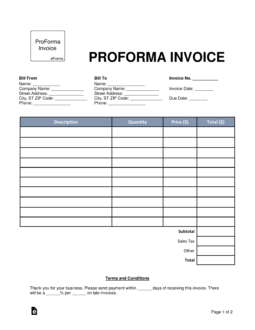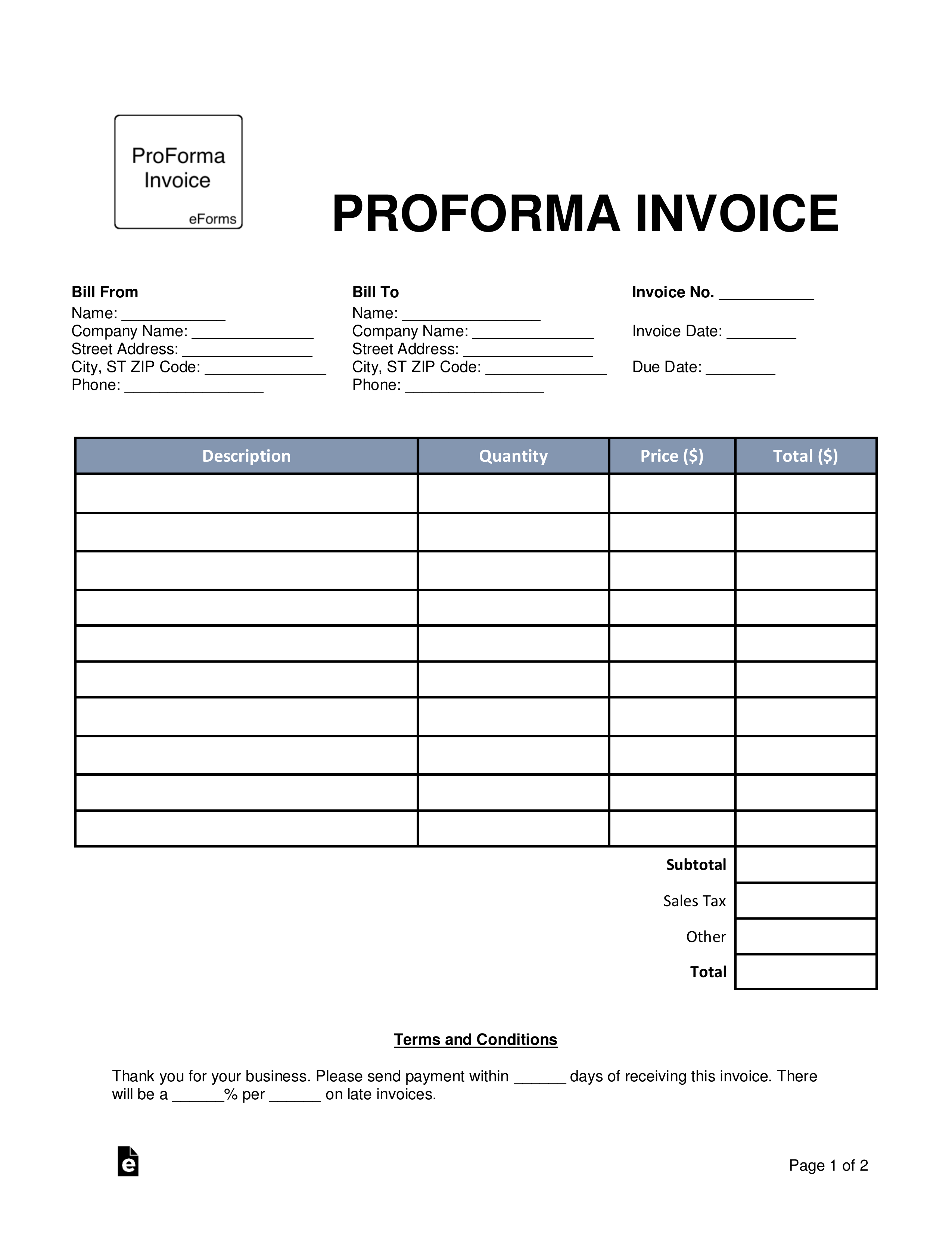Updated March 27, 2023
A proForma invoice is a preliminary record of sale that serves as a stand-in until transaction details are finalized. Like any other invoice, this one should contain an itemized list of items and costs. However, since this document is not necessarily in final form, shipping costs, taxes, and other details may be subject to change.
Businesses use ProForma invoices as written estimates that can help with bookkeeping and customs processing and can serve as the basis for hammering out a final agreement between buyer and seller – so invoices should always be prepared in good faith and delivered promptly.
What to Include
The ProForma invoice should be basically indistinguishable from a standard one, with the caveat that its figures are subject to change. It should include:
- The name, address, and phone number of both buyer and seller
- An itemized list of all items and their costs
- The estimated subtotal due, estimated taxes due, and estimated total due
- The payment due date and any penalties for late payment
How to Use a ProForma Invoice
1. Calculate Goods to be Sent
Review the order in detail and calculate the total preliminary costs.
2. Describe Each Preliminary Charge
Complete the invoice by filling out these preliminary quantities and costs. It may be wise to highlight particular elements that are most likely to change.
3. Submit Invoice
Submit the invoice when ready, and make sure to express that it is the ProForma, not the final version. Speak to the customer and ensure agreement on all terms.
4. Ship the Goods
Once the ProForma Invoice has been delivered and an agreement is achieved, you can send goods. Remember to record any changes in costs or quantities. Then, prepare the final invoice and deliver it promptly to the customer.



